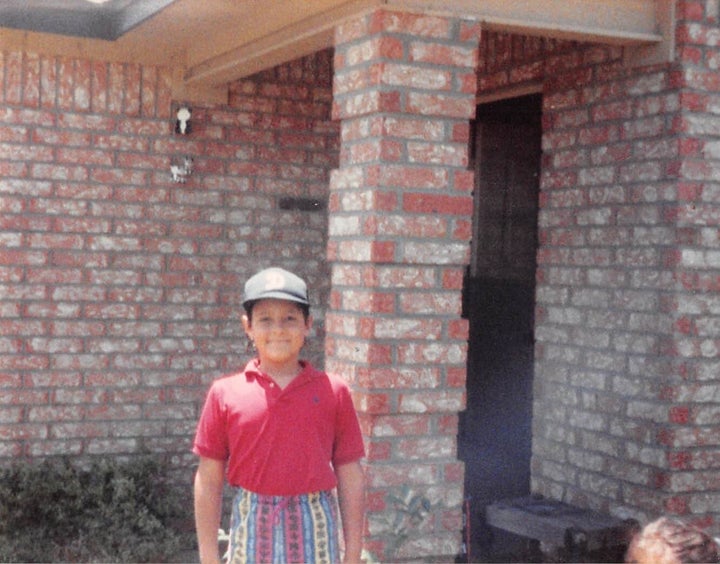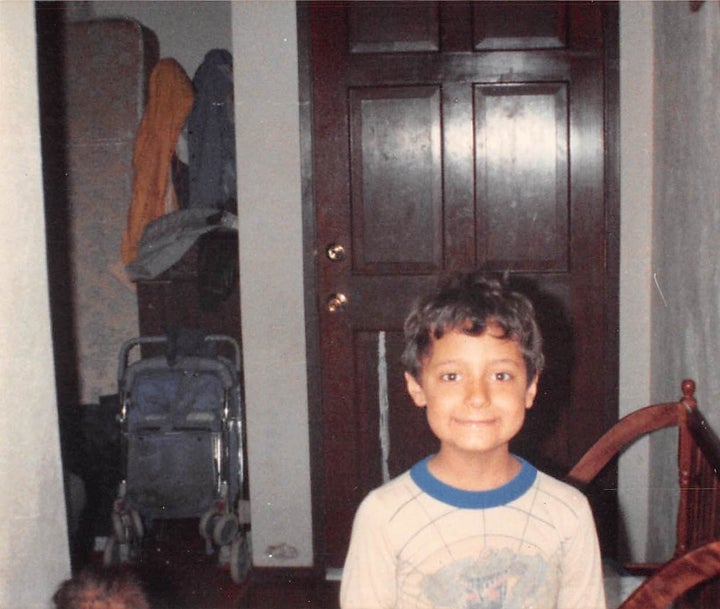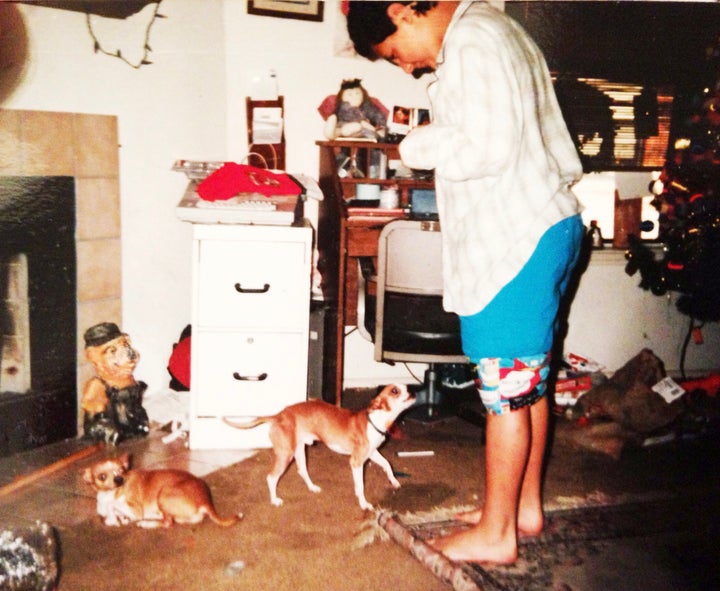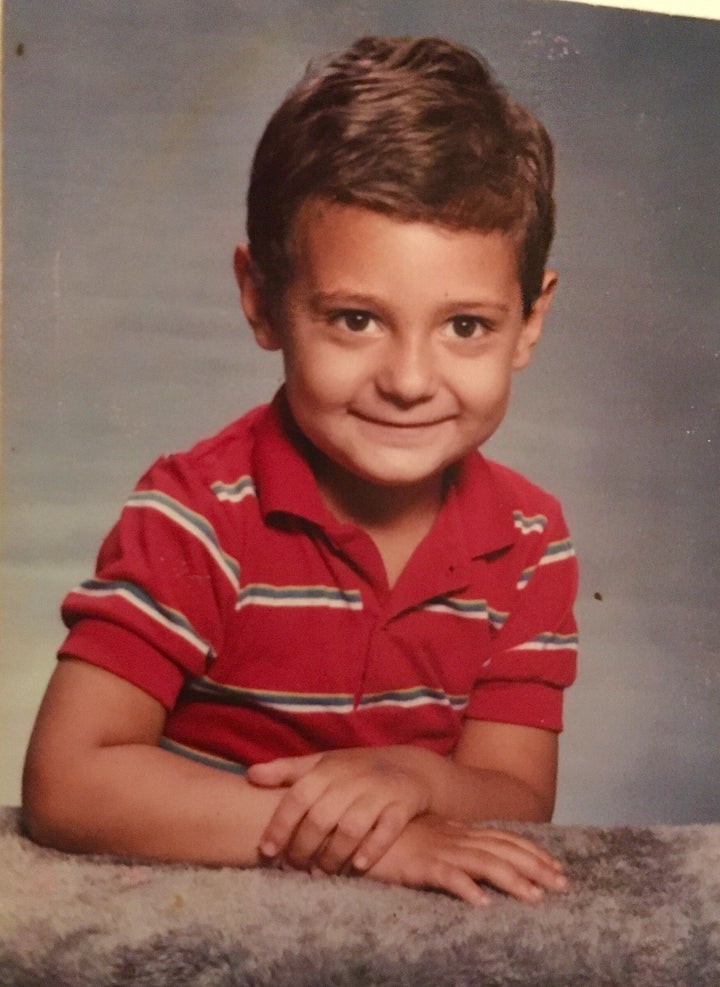Sitting in a TV studio, anchoring the news at an ungodly predawn hour, I reclined in my chair during a commercial break, using my phone to browse through crisp new dress clothes at an overpriced store. I was wondering if skinny ties were still in fashion when a notification came sliding down from the top of my screen. It was from my sister. There was no message, just a link with a headline, “Nampa couple arrested after kids found in cockroach-infested home.”
I sat up straight in my chair as if that would alleviate the sinking feeling in my stomach. It didn’t work. The problem wasn’t disgust at the skittering insects. The feeling was closer to embarrassment — the kind you get when caught in a lie.
After hovering my thumb over the link for a moment, I tapped on it.
“A Nampa couple faces a number of injury to child charges after police say they found children living in a house infested with thousands of cockroaches,” the KIVI-TV story said.
I replied to my sister with four words: “Sounds just like us.”
My mind careened back to my childhood — the one I told myself I’d come to terms with. The one I accepted, but didn’t mention to anyone.
When I was a kid, roaches scurried out of my backpack at school. Dog feces stuck to my shoes or smeared on my clothes. When kids made fun of me, I used to try to come up with clever lies for my classmates to explain it all away. “I’ve been volunteering at an animal shelter,” I’d say. Or, “This is synthetic poop and I’m part of a study on childhood bullying. I’ll include your taunting in my report.”
I thought I was really pulling one over on them when I said my family was actually quite rich — with a summer home and live-in maid — but my parents made me dress poor to keep me humble.

In reality, my dad was a big rig driver, and though he was away working much of the time, we could barely pay our electric bill. But the root of the hazmat conditions of my childhood home lay more with my mother. She had been sexually abused by a family member starting when she was 9 years old, and now, to cope with her demons, she ate box after box of Little Debbie snack cakes and slept the day away.
She also started collecting a herd of chihuahuas. Eventually, there were eight dogs in the house, and their yapping — she reasoned — would warn us if anyone tried to break in. Roaches took over. They stopped fearing lights, and they huddled in the corners of every room and dripped from the ceiling. It became like we were the ones intruding on them.
Secrets were my family’s addiction. No one could know the way we lived. No one could know who we really were. The house, the dog waste, the roaches ― it was our burden to carry alone. If someone knocked on the door, we all knew to freeze in place until they went away.
Out of the house, we would pretend to be normal, using a code of silence that we abided by even though it wasn’t explicitly discussed. We were alone, collectively and individually, each suffering separate horrors hiding the squalor we crawled from each day.
As an adult, I didn’t lie about my childhood. I just didn’t talk about how I was raised at all. I didn’t tell colleagues I used to steal spritzes of deodorant from supermarkets as a kid. I didn’t mention the times roaches crawled into my cans of soda and I accidentally ingested them.
Growing up and finding a career as a reporter let me cling to the idea that I was not the story. But, deep down, I was still holding onto those poisonous secrets.
Sitting in that gleaming, multimillion-dollar studio, I felt my armpits dampen. I was becoming more uneasy as I thought about my hidden past. The floor director started her countdown to the moment we’d be back on the air. As the announcer’s voice was triumphantly saying my name over a video clip of me turning and smiling in front of a downtown backdrop, my co-anchor mouthed, “You good?” with concerned eyes.
I smiled and nodded, and when the camera’s red light came on, thankfully, I slipped back into my role. I calmly read the news and ad-libbed about the weather. Viewers would never have known anything was wrong.
It wasn’t until the newscast ended, and I was in my newsroom cubicle, that the roaches came scurrying back into my mind.

In my inbox, there was an email from a producer I’d flagged for follow-up but hadn’t had the heart to return to.
“Hi, gang. I need school photos of y’all. I’m making a back-to-school montage of the anchors,” her email said, causing a reflexive long sigh the moment I read it.
The montages were supposed to promote our back-to-school coverage letting people know about vaccinations and school supply drives. It’s something I had to do with photos many times before, not only for the back-to-school season but for Mother’s Day, Christmas and more. Normally, it involved me cropping out anything depressing like dog waste on the floor. I’d also have to zoom in past the watermarked letters spelling “PROOF” on the school photos my parents never got around to paying for.
One photo I landed on showed me hanging out with my younger sister at a Little League park. Another showed one of our many chihuahuas, whose snarl seemed almost like a smile. Even with these pleasant memories, there’s stomach-churning physical evidence of the way we grew up. Tiny amber-colored specks litter many of the photos. My siblings and I call it “bug dust” as in the opposite of Tinkerbell’s fairy dust. Roaches leave it behind when they shed their skins. The lining of the few photo albums my mom kept became nests for bugs.
“You can also share these pics on social media,” the producer’s email went on to say.
As I flipped through my photo gallery, the thought of Instagramming any of these childhood pictures made me chuckle. How many likes would I get for the photo of me in mismatched clothes standing in our dog-urine-stained living room, I wondered.

The online world is in a constant state of flexing — literally so for plenty of male reporters I know. For many media-types especially, the goal seems to be a too-perfect, Kardashianesque photo stream. I’m guilty of it, too.
Honesty keeps us connected, and it’s pretense that closes us off. I didn’t want those kids in Nampa and others like them to feel any more alone than they already did.
Their story reminded me so much of my own, but a quick search showed we were far from the only ones. The Department of Health and Human Services reports 674,000 children were abused and neglected in 2017, and child protective services were called in to investigate the welfare of 3.5 million kids. Staggering numbers, yet they’re not reflected by even a single photo on my friends’ smiling Facebook feeds.
My roulette wheel of images next stopped on one showing 6-year-old me in our old living room. My greasy brown curls are untamed, my clothes are dirty and I’m holding what remained of a fast-food hamburger. My wide eyes are staring at the camera. I didn’t remember the moment, but I remembered being him, probably waiting to return to the TV screen. What struck me most was how content I looked. I didn’t feel sorry for myself back then. I found ways to have fun, to be happy. I found joy because that’s what children are wired to do.

I’d been avoiding those childhood photos for fear they would remind me how much I suffered, but as I finally looked at them, I was instead reminded of how I survived.
It was TV, and later books, that gave me refuge. I spent hours upon hours losing myself in fiction. I spent my time with “Mister Rogers’ Neighborhood,” “Lois and Clark,” “I Love Lucy,” “Doogie Howser, M.D.” and countless other shows. I was a superhero, a child doctor and an alien in disguise. This is how I made it through my childhood and why I remember spending much of it being happy.
I fell in love with stories and, in turn, those stories saved me. Even in fiction, what we connect to are truths — shared experiences of what it means to be human.
Stories are the opposite of secrets.
I decided to post the article about the Idaho kids. I tweet news links every day, but this time, I included not just what I saw as objective facts. I also told my own truth — something I figured social media could use more of: “We cover a lot of horrible things, but this one really hits home. It sounds almost identical to the house my siblings and I were raised in. I wish I could tell these kids, especially the 13-year-old, they’re not defined by their parents’ mistakes.”
I immediately got questions that I should have predicted: “How could your parents let their kids live like that?”
I thought about explaining my mother’s emotional problems. I could’ve explained it was the turmoil of sexual abuse that led her to slowly kill herself with years of binge eating and taking prescription drugs, so much so that her body finally gave out in 2007 when she was just 43. But there was no simple answer for it. I’d rattled it around in my noggin for decades and no explanation ever clicked into place in a way that made sense.
My mom will never be able to explain or apologize. My dad’s attempts at justification left much to be desired. He has shown regret, though, and I’ve chosen for that to be enough.
I forgive my parents. And I’m thankful for my life and things I might otherwise take for granted — clean socks, deodorant, regular meals. I’m grateful that I speak the language of suffering. As a journalist, I get to use that fluency to connect to other people and share their stories as honestly and empathetically as possible.
For my back-to-school photo, I decided to send a picture from kindergarten. The day it was taken, Mom made a last-minute attempt to flatten my curls into a sleeker shape than nature intended. I was wearing a red shirt that had once belonged to my brother. On the image, there are a couple of specks of bug dust near my head and darkly tanned arms. I didn’t try to crop them out this time. I’d always expected someone would inquire about the monochromatic confetti on my pictures if I sent them in untreated. But no one seemed to notice.
I’d always feared being seen as damaged if people found out where I came from. The truth is, everyone’s damaged. All of us have experienced joy, and all of us, in some way, have suffered. The degree varies, but when we’re honest about these private miseries — and celebrations — that’s what keeps us anchored to one another.
Steven Romo is a news anchor, reporter and writer from Texas. You can follow his adventures on Twitter and connect on most other social media platforms with the username @stevenromo. Find more of Steven’s news stories and videos here.
Do you have a compelling personal story you’d like to see published on HuffPost? Find out what we’re looking for here and send us a pitch!
